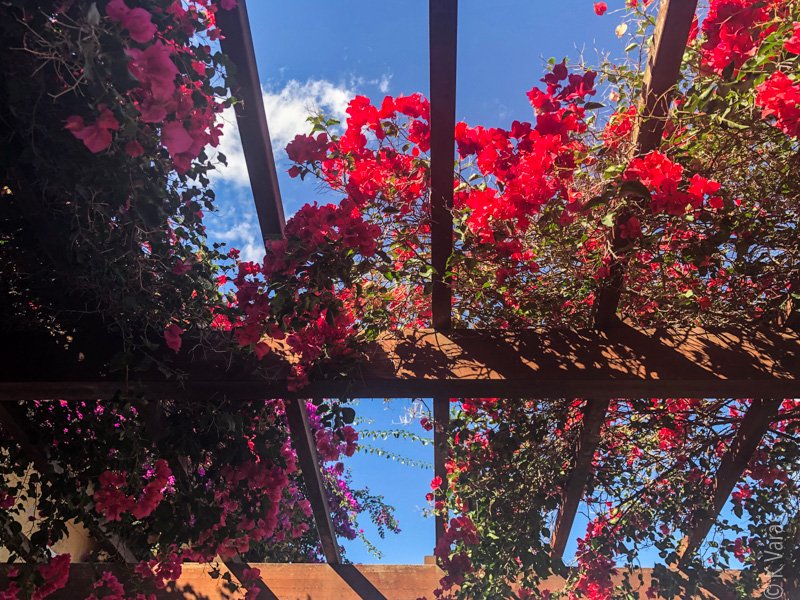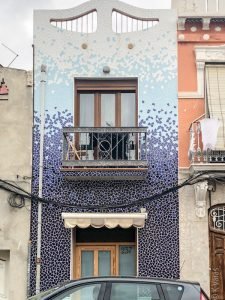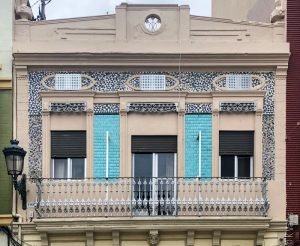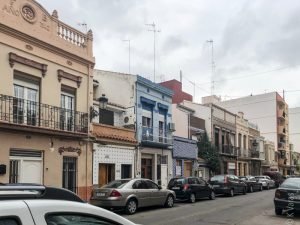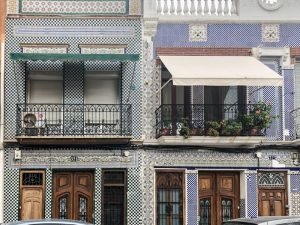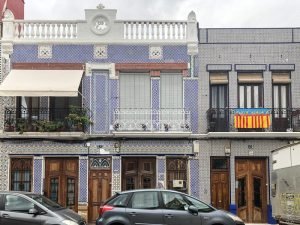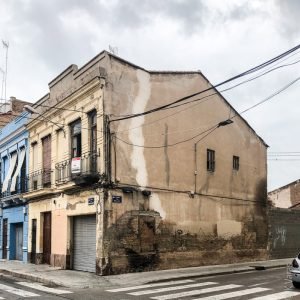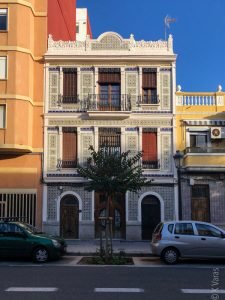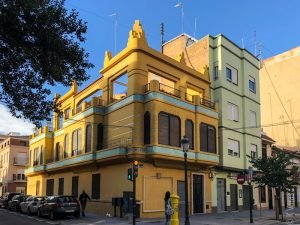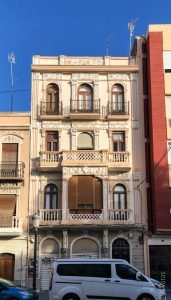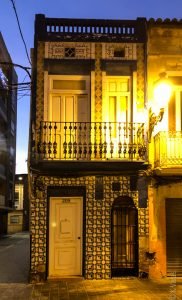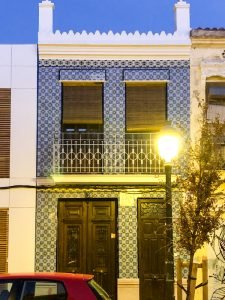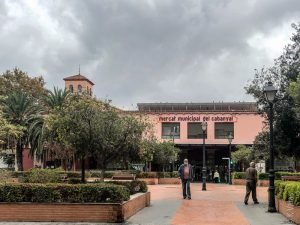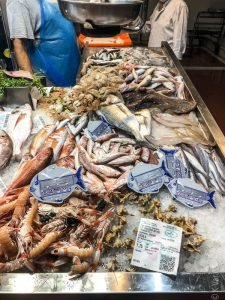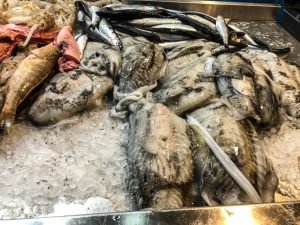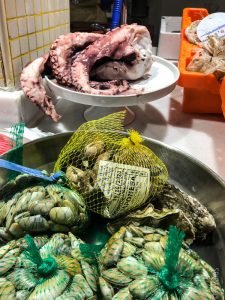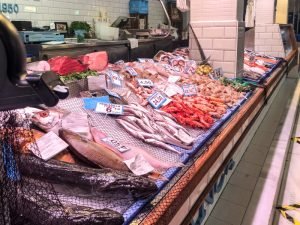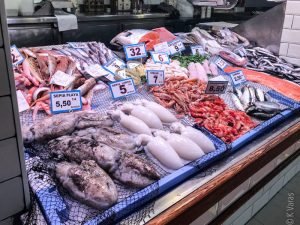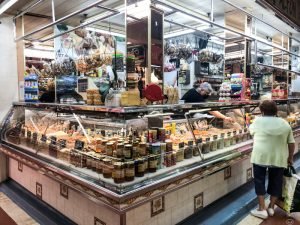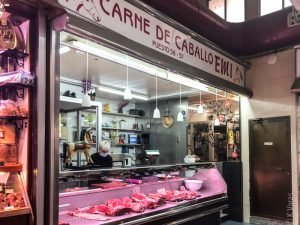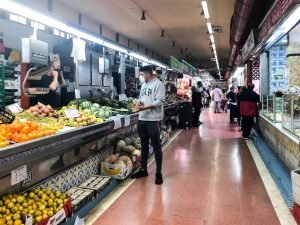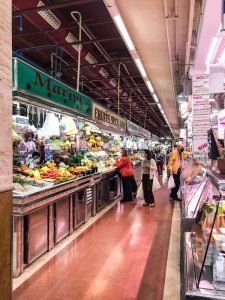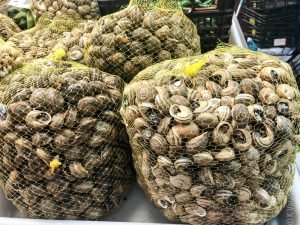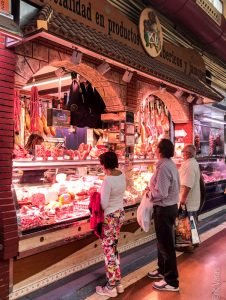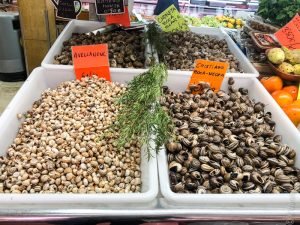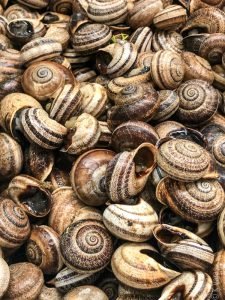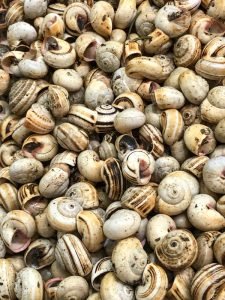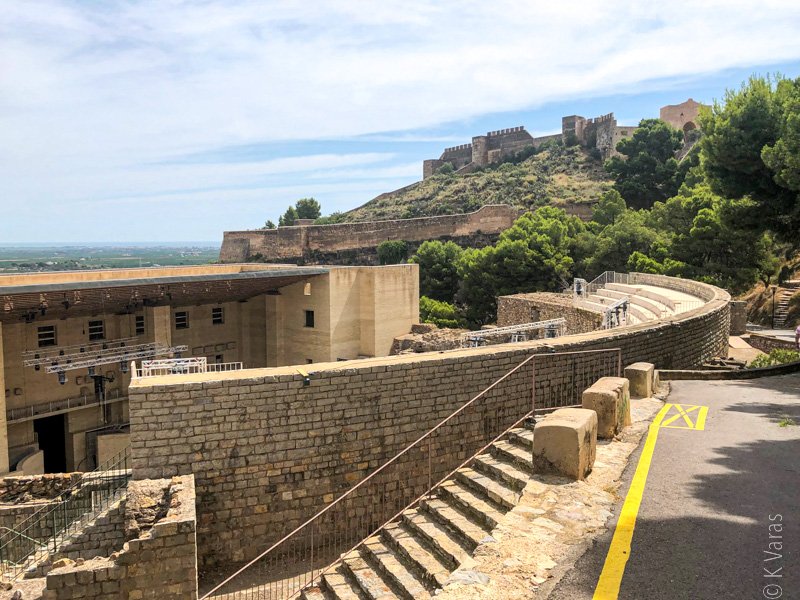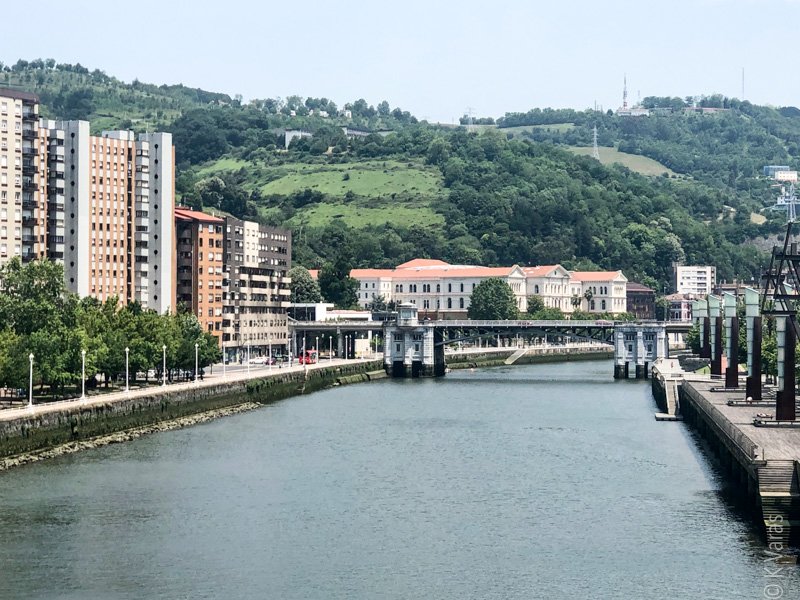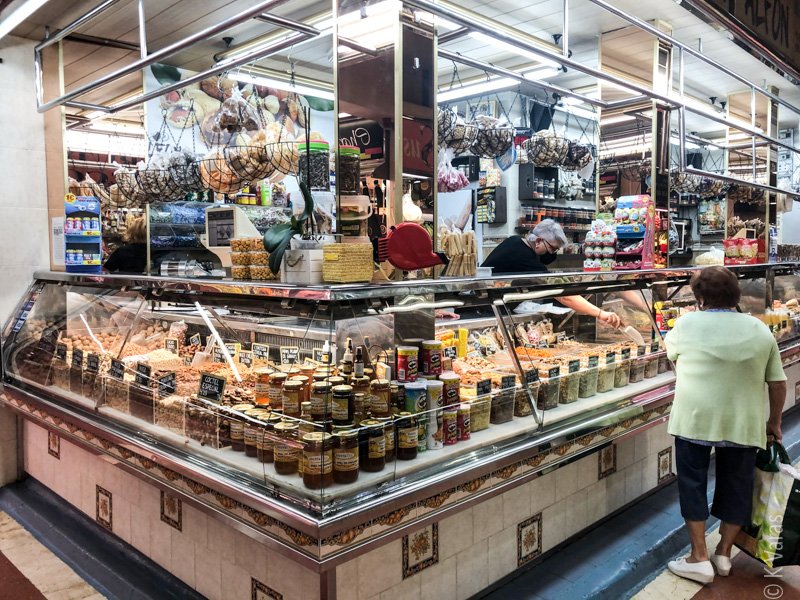
El Cabanyal and its Mercat
One of the main reasons I chose the hostel as my stop in Valencia was its proximity to the beach; the other was its price. It certainly delivered on both. The fact that I also made as good a friend as Ewa, in such a short time, is definitely a bonus. But I digress. I didn’t really mind that the main marina of Valencia was actually much closer to my new temporary home than the beach, but in all honesty, never once did that diminish my enjoyment of the area. What I hadn’t realized at the time of booking, however, was the fact that I was also going to be just south of the very interesting–and I’m told up-and-coming–neighbourhood of El Cabanyal.
My (very educational) experience at the Gaudí y Trancedís exposition at the Museo de Ceràmica a few days earlier gave me the push needed to survey the area more closely. I had already gone up and down quite a few of the streets of this neighbourhood, mostly in search of food or a photocopy place, but this was my first attempt at finding some of the façades I had seen at the exposition, i.e. examples of Gaudí-inspired works, as well as a chance to capture at least a little of the neighbourhood feel on camera. I already knew this place was cool (I’m not blind, you know), but this time I paid attention.
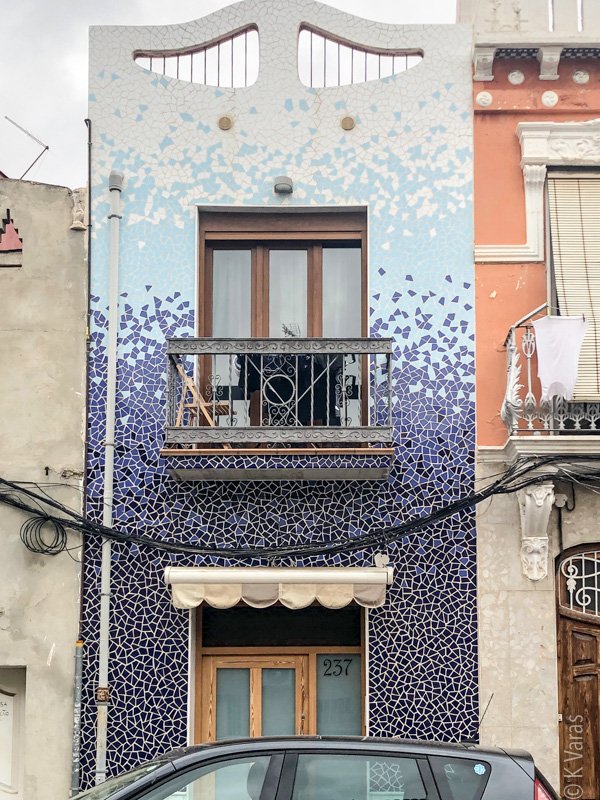
I’m going to be honest with you: finding the same houses I saw featured on the video at the show proved to be way, way harder than I thought. I mean, how many streets can one go down before finding something? And the answer is: so many, so very many. You see, El Cabanyal may be only about 1.4km square, but it’s divided into a grid of roughly ten by 13 streets, give or take a weird little street here and there, and roughly a kilometer of beach. The blocks are long and narrow, lined with mostly old, two-story, fishermen’s or port worker’s cottages and interspersed with multi-storey construction that is clearly newer and, to my eyes, much uglier. Many of the houses look like they could use a little TLC, and, judging from the amount of construction going on just about every street, they seem to be getting it. I do hope that most of that work is restorative and not destructive, though I fear it may be the latter more often than not. I hear rumours that the city of Valencia is planning on revitalizing the area in the next few years so I expect property values will be going up. Gentrification, here it comes.
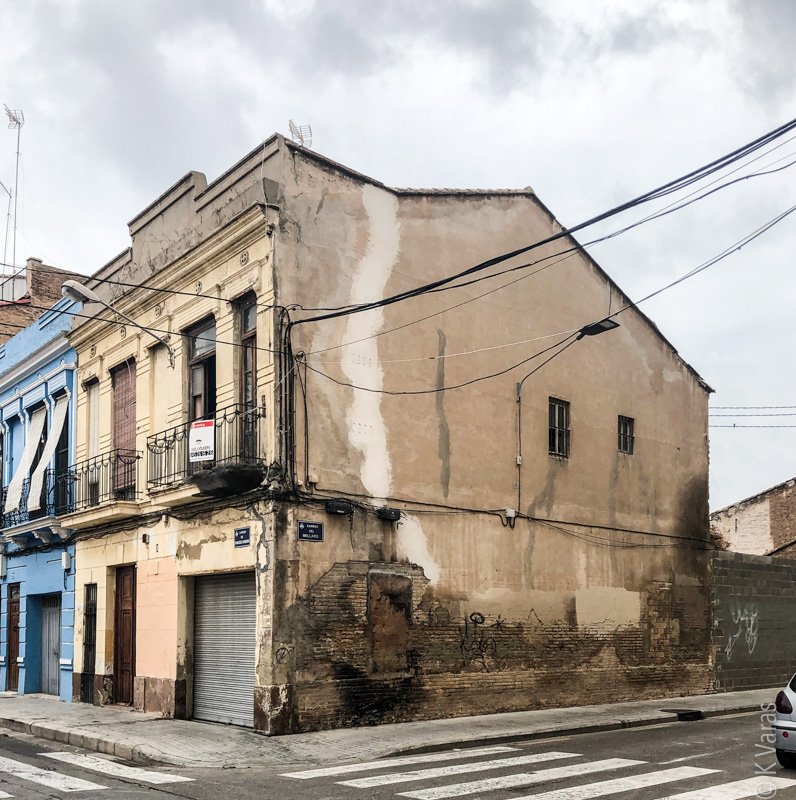
There is something to be said about living in a vibrant neighbourhood so close to the beach, and the thought of buying an old house here and renovating it to my liking has definitely crossed my mind. More than once. I even found a great candidate but for the life of me could not find the price on the realtor’s website; I suspect it would be higher than I’d be prepared to invest, unfortunately. This is the time to get in on the ground floor, so to speak, and, in a few years, have a valuable place in a sought-after area, very much like the Russafa neighbourhood, which I’m told has gone through exactly this kind of rebirth a few years ago and is now considered rather posh. I haven’t quite managed to make it to Russafa yet, but when I do, you shall know first-hand how good a job the city has done. Well, from street-level at least.
As I wondered around looking for examples of trencadís, I did spot some pretty houses, but what I was really happy to see was the local municipal market, a mini version of el Mercat Central, if you will. And what a joy it was, too! A neighbourhood isn’t truly a neighbourhood unless it has its very own market, and this one dates back to 1958. I know that doesn’t seem very old but then it was a replacement for a smaller market only a couple of blocks away that had served the area from 1867, when this area was a proper village, long before being absorbed by the city of Valencia. The market is quite large, with many stalls selling local and imported produce. Its specialty is–and this is no surprise–seafood. I read that seafood here rivals that of Mercat Central, and the easy-going and friendly vendors give the place a truly unique feel. It is also said that El Cabanyal residents were (are still?) known for being able to determine the quality and freshness of fish sold in the market just by looking at their fishy eyes. I didn’t look into them myself so can’t verify the veracity of that statement, but I do have to admit the seafood looked amazing and more than once I felt myself salivating and wishing I had a proper kitchen, never mind my old pantry.
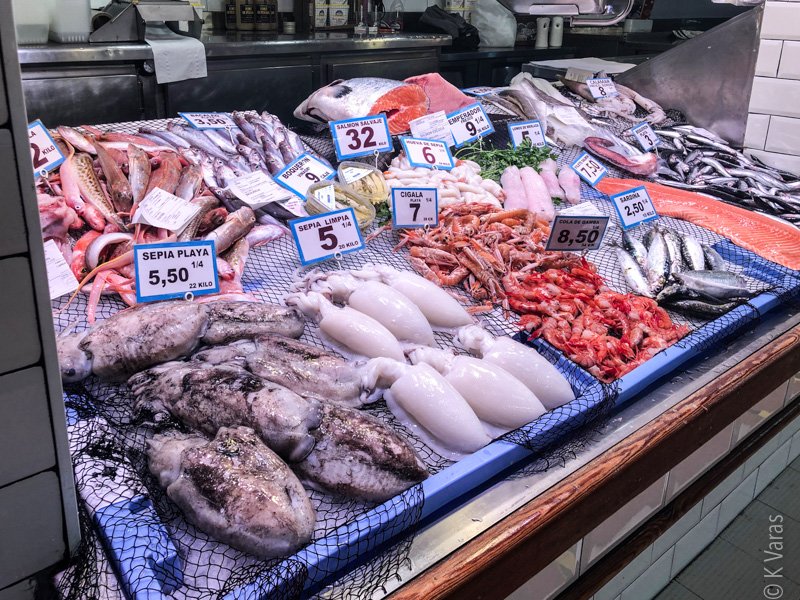
This market had the usual myriad of fruit and vegetable stands, meat counters, cheese shops, and olive vendors, but three things stood out for me: 1. one of the bakeries makes the most amazing little baby croissants stuffed with chocolate; 2. there are more than one stall where they sell horse meat!; and 3. caracoles come in many colours and sizes. Sorry, no pictures of the croissants, I ate them too quickly, but there are plenty of photos of the caracoles. If only I knew how to prepare them! I have yet to see them on a menu, strangely enough, but maybe I just haven’t found that one specialty restaurant that serves them, similar to what we stumbled onto in Sevilla back in 2013. Those little buggers are so delicious, I really hope I’ll get to try some again one of these days.
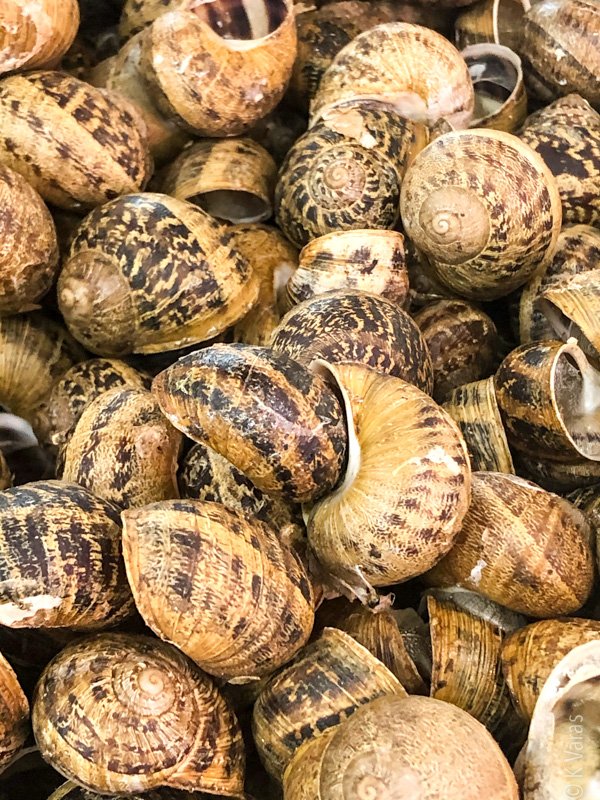
Although the market isn’t exactly next door to my hostel, it is close enough that I will return to it more than once in the coming days, mostly to just look around, but also to get more croissants 😉
NB: The Gallery pictures for this post are split between El Cabanyal and El Mercat de Cabanyal.
Mercat Municipal del Cabanyal
